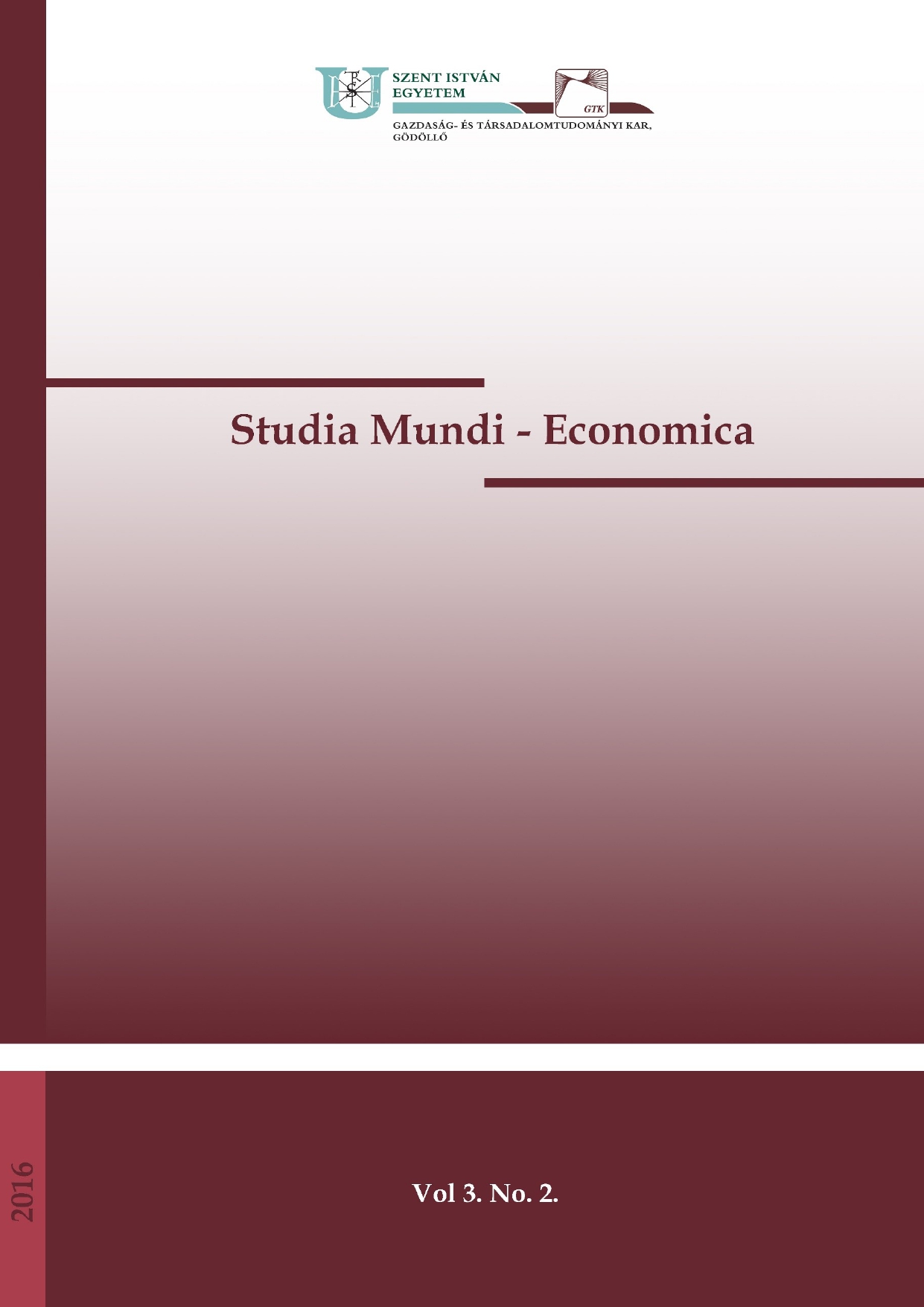A hungarikumok területi elemzése Európában
DOI:
https://doi.org/10.18531/Studia.Mundi.2016.03.02.125-133Kulcsszavak:
protected origin, Hungaricum analysis, higher education, spatial analysisAbsztrakt
In the past years there have been many investigations aiming to analyse the timely issue of consumer behaviour related to Hungaricums, but a great extent of these have dealt only with the ones belonging to the agriculture and food economy. Hungaricums play an important role in strengthening the Hungarian national identity, in creating an attractive country-image and also in tying closer the nation together. The European Union have created a unified regulation system for the designated protection of national origin, by which it aims to keep the diversity of food. During the current research several segments of the Hungarian higher education was inquired about the image of Hungaricums. We concluded that, compared to Hungarian students, foreign students do not know the products/values belonging to the Collection of Hungaricums as well. The investigation proves that a more targeted national marketing and the increased appearance of the topic in daily life is needed. Also, it is important to mention that the Hungarian economy nowadays is in a difficult situation, since the basic functions of the countryside have been weakened. Among others, these problems may be solved by preserving traditions. The importance of rural traditions has decreased, therefore the role of initiatives aiming to improve community-organisation and individual responsibility, such as the Collection of Hungaricums and the Hungarian Repository of Values, is vital.
Hivatkozások
Bagossy L. (szerk.) (1996): Encyclopaedia Hungarica I. kötet (A - H). Hungarian Ethnic Lexicon Foundation, 762-765 oldal, Calgary 1996 (ISBN 0-9695894-0-9)
Gyaraky Z. (2014): a Hungarikum Bizottság titkára a Hungarikum Törvényről és a Magyar termékmegjelölés stratégiai elemeiről: www.elelmiszerlanc.hu (letöltés ideje: 2014. 02.28.)
Horváth Gy.- Fonyódi V. (2008): Határtalan hálózatok, MTA hírek, 2008. 06.02. internetes elérhetőség: http://mta.hu/mta_hirei/hatartalan-halozatok-57661/
Káposzta J. (2014): Területi különbségek kialakulásának főbb összefüggései GAZDÁLKODÁS 58:(5) pp. 399-412. (2014), ISSN 0046-5518
Káposzta J.-Nagy A.-Nagy H. (2016): The impact of tourism development policy on the regions of Hungary, Regional Economy. South of Russia 11:(1) pp. 10-17. ISSN 2310-1083
Káposzta J. -Ritter K.-Kassai Zs. (2015): Hungarikumok területi jelentőségének vizsgálata, különös tekintettel a pálinkára. Tér és Társadalom 2015. 4. 29. évfolyam. DOI: https://doi.org/10.17649/TET.29.4.2707 eISSN: 2062-9923
Kassai Zs.-Ritter K.-Káposzta J. (2016): Food hungaricums as endogenous resources In: Ritter K (szerk.): Economic and local aspects of rural development. 117 p. Gödöllő: Szent István Egyetemi Kiadó, 2016. pp. 96-107.
Nótári M. – Ferencz Á. – Berde Cs. (2009): Hungarikumok fogyasztói elemzése, Gazdálkodás, Budapest, 53: (5), pp. 433-439., ISSN 0046-5518
Ritter K. (2013): A hungarikumok szerepe a vidékfejlesztésben a 2014-2020-as vidékstratégiatükrében. pp. 64-69. In: Káposzta J. (Szerk.): A KKV-k szerepe és helyzete a gazdaságban és a Hungarikumok szerepe a területi fejlődésben és fejlesztésben (Gödöllő, 2013. november 28-29.) Gödöllő: SZIE GTK RGVI, ISBN 978-963-269-408-5
Tózsa I. - Zátori A. (2013): Hungarikumok, Corvinus Turizmus Kompetencia Központ Szakkönyvsorozat 1. Kötet, 9. oldal, Budapesti Corvinus Egyetem, Gazdaságföldrajz és Jövőkutatás Tanszék, Turizmus Kompetencia Központ, Budapest 2013 (ISBN 978-963-503-538-0)
Vidra-Szabó F. (2003): A használók elvárásának és elégedettségének kérdőíves vizsgálata a könyvtárakban, 49. évfolyam, 2003. 4. szám, Könyvtári Figyelő
Villányi L. - Tóth T. - Káposzta J. - Szénay L. - Molnár J. - Péter B. - Guth L. – Puskás J.- Kapronczai I.- Lehota J. - Szénay L. (2000): Agrárgazdaságtan, Budapest: Szaktudás Kiadó Ház, ISBN:963 356 319 4 242 p.
Tózsa I.- Zátori A. (2013): Hungarikumok, Budapest, Budapesti Corvinus Egyetem, Gazdaságföldrajz és Jövőkutatás Tanszék, Turizmus Kompetencia Központ, ISBN: 978-963-503-538-0
Török Á. (2013): Hungarikumok - Magyarország földrajzi árujelzői? - Az eredetvédelem szerepe a XXI. századi mezőgazdaságban és élelmiszertermelésben - a pálinka példájának tanulságai, Doktori értekezés, Budapest, Budapesti Corvinus Egyetem
A magyar nemzeti értékekről és a hungarikumokról szóló 2012. évi XXX. törvény, MAGYAR KÖZLÖNY. 2012. évi 42. szám, 8116-8122. oldal.
Letöltések
Megjelent
Folyóirat szám
Rovat
License
Copyright (c) 2016 László Péli, Kitti Némedi Kollár

This work is licensed under a Creative Commons Attribution-NonCommercial-NoDerivatives 4.0 International License.
A folyóirat Open Access (Gold). Cikkeire a Creative Commons 4.0 standard licenc alábbi típusa vonatkozik: CC-BY-NC-ND-4.0. Ennek értelmében a mű szabadon másolható, terjeszthető, bemutatható és előadható, azonban nem használható fel kereskedelmi célokra (NC), továbbá nem módosítható és nem készíthető belőle átdolgozás, származékos mű (ND). A licenc alapján a szerző vagy a jogosult által meghatározott módon fel kell tüntetni a szerző nevét és a szerzői mű címét (BY).






